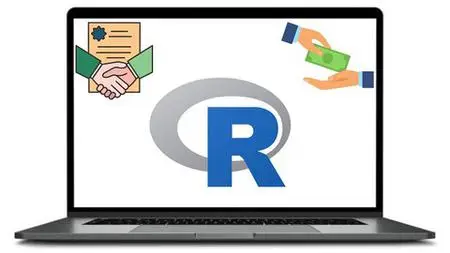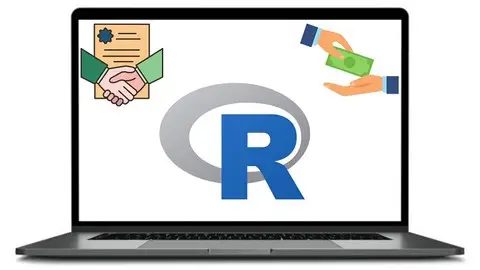Credit Risk Modeling Using R Programming
Published 2/2023
MP4 | Video: h264, 1280x720 | Audio: AAC, 44.1 KHz
Language: English | Size: 2.17 GB | Duration: 4h 16m
Published 2/2023
MP4 | Video: h264, 1280x720 | Audio: AAC, 44.1 KHz
Language: English | Size: 2.17 GB | Duration: 4h 16m
Learn end to end credit risk scorecard and probability of default (PD) modeling using R Programming with real-life data
What you'll learn
Learn Model Development from scratch
Understand step by step application of R codes
Understand output interpretation and it's business logic
Aligning Analytics with Business Requirements
Impress interviewers by showing practical knowledge of credit risk model development
Learn the most in demand skill
Requirements
A computer (Windows/Mac/Linux). That's it!
No prior experience is required. This course is meant for beginners and the explanation is from scratch
Zeal and enthusiasm to learn a new skill
Description
Every time an institution extends a loan, it faces credit risk. It is the risk of economic loss that every financial institution faces when an obligor does not fulfill the terms and conditions of his contracts. Measuring and managing the credit risk and developing, implementing strategies to help lowering the risk of defaults by borrowers becomes the core of any risk management activities.Financial institutions make use of vast amounts of data on borrowers and loans and apply these predictive and statistical models to aid banks in quantifying, aggregating and managing credit risk across geographies and product lines. In this course, our objective is to learn how to build these credit risk models step by step from scratch using a real life dataset.The course comprises of two sections: 1) Developing a credit risk scorecard and 2) Developing a Probability of Default (PD) model. We will build a predictive model that takes as input the various aspects of the loan applicant and outputs the probability of default of the loan applicant. PD is also the primary parameter used in calculating credit risk as per the internal ratings-based approach (under Basel guidelines) used by banks.In this course, we will perform all the steps involved in model building and along the way, we will also understand the entire spectrum of the predictive modeling landscape.
Overview
Section 1: Introduction
Lecture 1 Introduction
Section 2: Credit Risk Scorecard Development
Lecture 2 Dataset Variables
Lecture 3 Data for Building Model
Lecture 4 Steps in Model Building
Lecture 5 Data Preprocessing 1
Lecture 6 Data Preprocessing 2
Lecture 7 Logistic Regression Model 1
Lecture 8 Logistic Regression Model 2
Lecture 9 Fitting the Model
Lecture 10 Model Performance 1
Lecture 11 Model Performance 2
Lecture 12 Model Performance 3
Lecture 13 Model Performance 4
Lecture 14 Model Performance 5
Section 3: Probability of Default Model
Lecture 15 Expected Loss
Lecture 16 Data Exploration 1
Lecture 17 Data Exploration 2
Lecture 18 Creating Default and No Default categories
Lecture 19 Default Rate Calculation
Lecture 20 Default Rate for each Loan Grade
Lecture 21 R Packages
Lecture 22 Training and Test Datasets
Lecture 23 Discarding Attributes
Lecture 24 Converting Data Types
Lecture 25 Attributes with Zero Variance
Lecture 26 Default By States
Lecture 27 Finding Correlation
Lecture 28 Variable Transformation
Lecture 29 Model Development
Beginners/students,Experienced analytics professional,working professionals who want to shift towards risk modeling,Data science/machine learning enthusiasts who want to learn a new skill



